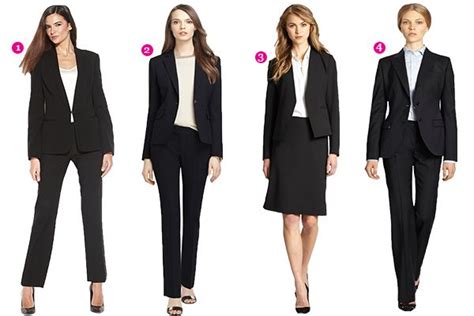Dressing appropriately for a hospital interview is crucial to making a positive first impression. Your attire should convey professionalism, respect, and confidence while adhering to the hospital’s dress code and infection control policies.

Professionalism and Respect
First and foremost, your outfit should exude professionalism and respect for the hospital and the interviewers. Avoid revealing or overly casual clothing that may distract from your qualifications and experience. Instead, opt for classic, tailored pieces that convey a sense of polish and competence.
For Women:
- Suits: A navy, black, or gray suit is always a safe and appropriate choice. Pair it with a button-down shirt or blouse in a solid color, such as white, cream, or light blue.
- Dress: A knee-length or midi dress in a modest and professional style. Choose a muted color and avoid patterns that are too busy or distracting.
- Skirt and Top: A pencil skirt or A-line skirt paired with a tailored blouse or top in a complementary color.
For Men:
- Suit: A navy, black, or gray suit with a matching jacket and pants. Wear a dress shirt in white or a light blue shade.
- Sport Coat and Slacks: A dark-colored sport coat paired with dress slacks in a coordinating color. Choose a shirt with a collar, such as a button-down or polo.
- Button-Down Shirt and Slacks: A crisp, white or blue button-down shirt with dress slacks in a neutral color, such as navy or khaki.
Adhering to the Hospital Dress Code
Hospitals often have specific dress codes to maintain a professional and hygienic environment. Respect the hospital’s policies by observing the following guidelines:
- Clean and Pressed: Your clothes should be freshly laundered and pressed to convey a sense of neatness and attention to detail.
- Closed-Toe Shoes: Wear closed-toe shoes with a low heel for both safety and comfort. Avoid open-toed shoes or sandals.
- Coverings: If you have any tattoos or piercings, ensure they are discreetly covered.
- Hair and Makeup: Keep your hair well-groomed and makeup natural. Avoid excessive jewelry or perfumes.
- Infection Control: Follow any specific dress code requirements regarding gowns, scrubs, or other protective gear.
Matching the Hospital Culture
While professionalism and respect are essential, consider the hospital culture when selecting your outfit. Some healthcare settings may have a more formal dress code, while others may allow for more relaxed attire. Research the hospital’s website or contact the HR department to gain insights into the appropriate attire.
Common Mistakes to Avoid
To avoid making a fashion faux pas, steer clear of the following common mistakes:
- Too Casual: Jeans, t-shirts, and shorts are generally not appropriate for a hospital interview.
- Overly Revealing: Avoid clothing that is too low-cut, short, or tight.
- Distracting Accessories: Limit jewelry, scarves, or other accessories that may draw attention away from your qualifications.
- Uncomfortable Footwear: Choose shoes that are comfortable to walk and stand in for extended periods.
- Lack of Coverage: Ensure your attire covers tattoos and piercings appropriately to maintain hygiene and professionalism.
Why It Matters
Dressing appropriately for a hospital interview has several benefits:
- Makes a Positive First Impression: Your appearance contributes to the interviewer’s initial impression of you.
- Conveys Respect: Respecting the hospital’s dress code demonstrates your professionalism and understanding of their environment.
- Boosts Confidence: When you feel good about the way you look, you naturally project confidence and competence.
- Increases Chances of Success: A well-groomed appearance can enhance your credibility and increase your chances of making a positive impression.
Table 1: Hospital Interview Attire for Women
| Item | Professionalism | Adherence to Dress Code | Comfort |
|---|---|---|---|
| Suit | High | High | Medium |
| Dress | Medium | Medium | High |
| Skirt and Top | Medium | High | Medium |
Table 2: Hospital Interview Attire for Men
| Item | Professionalism | Adherence to Dress Code | Comfort |
|---|---|---|---|
| Suit | High | High | Medium |
| Sport Coat and Slacks | Medium | Medium | High |
| Button-Down Shirt and Slacks | Medium | High | High |
Table 3: Tips for Choosing Accessories
| Item | Professionalism | Adherence to Dress Code |
|---|---|---|
| Jewelry | Medium | Low |
| Scarf | Low | Medium |
| Bag | Medium | Low |
Table 4: Common Mistakes to Avoid
| Mistake | Impact |
|---|---|
| Too Casual | Negative first impression |
| Overly Revealing | Unprofessional and disrespectful |
| Distracting Accessories | Draw attention away from qualifications |
| Uncomfortable Footwear | Distraction and discomfort |
| Lack of Coverage | Hygiene concerns and unprofessionalism |
In conclusion, dressing professionally and appropriately for a hospital interview is crucial for making a positive impression and demonstrating your respect for the hospital environment. By adhering to the hospital dress code, considering the hospital culture, and avoiding common mistakes, you can enhance your confidence and increase your chances of success.
